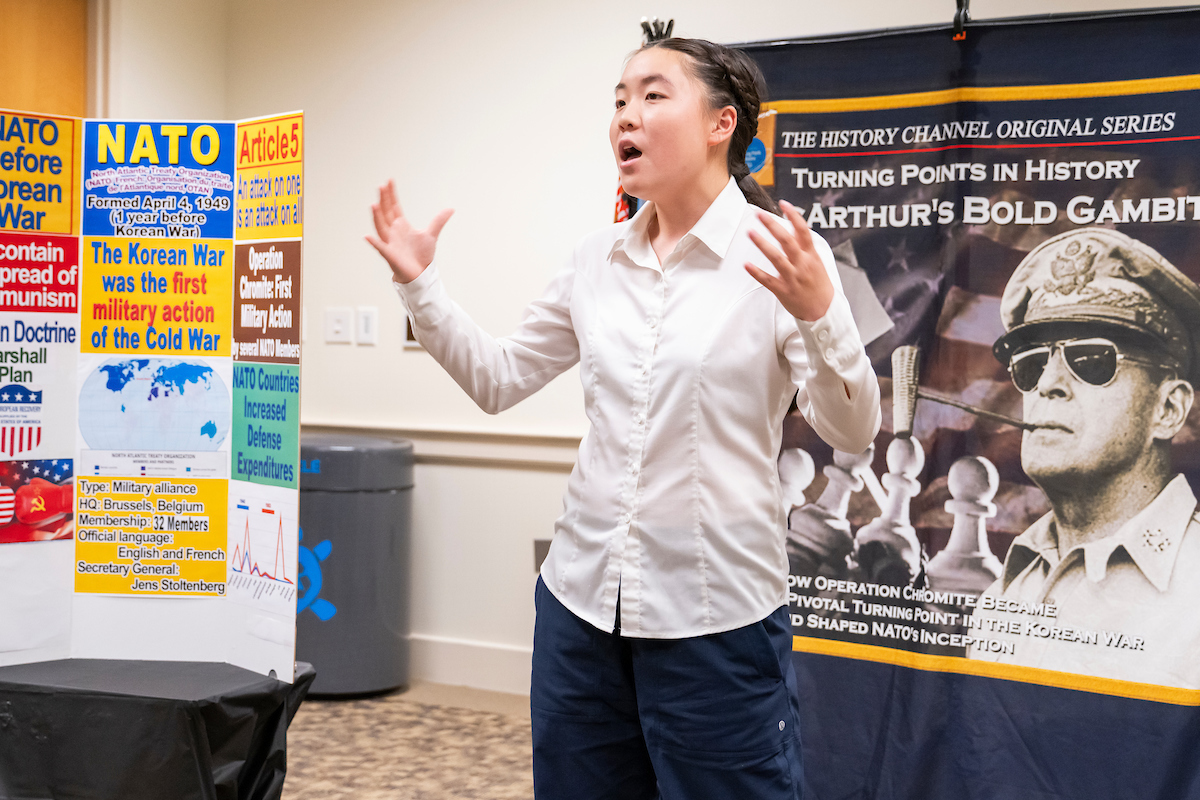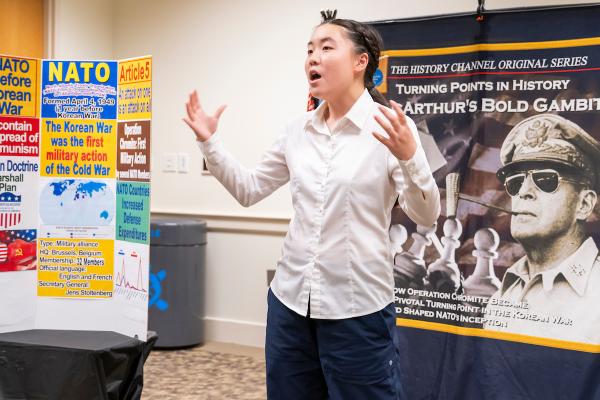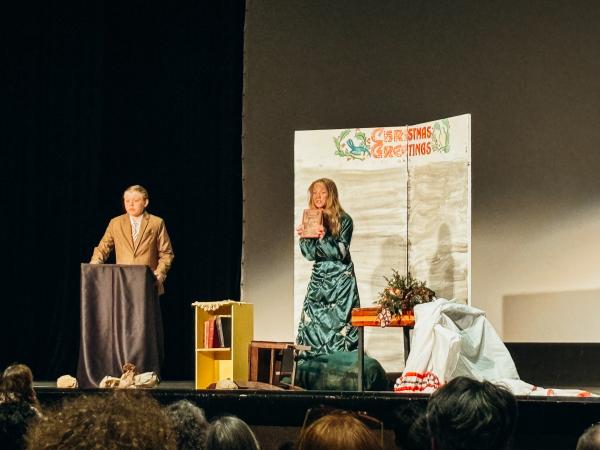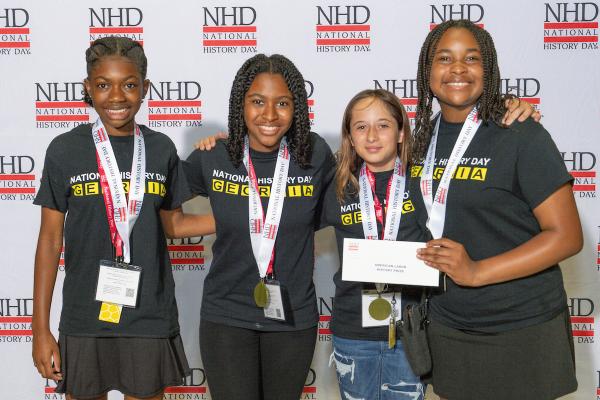KID REPORTERS’ NOTEBOOK
National History Day Celebrates 50 Years


Audrey Kim, a middle school student from California, placed second in the junior individual performance category. Her research project was entitled “MacArthur’s Bold Gambit: How Operation Chromite Became a Pivotal Turning Point in the Korean War and Shaped NATO’s Inception.” Led by U.S. Army General Douglas MacArthur, the military operation succeeded because of the coordination between the U.S., the United Kingdom, Canada, and other countries.
If you had to name the most important turning point in history, what would it be? This year, National History Day (NHD) asked that question of participating students. The nonprofit organization held its 50th student showcase and competition in June in Washington, D.C.
For five decades, NHD has been challenging students in grades 6 through 12 to examine history through a new lens. Students research historical events that changed the country and the world. They create presentations in various formats—from traditional research papers to documentary films—to be judged in local and national competitions.
The top two projects from each affiliate around the country are invited to compete in their respective categories during a special week in Washington, D.C. In total, 99 NHD entries were displayed in Smithsonian Museums and at the White House Historical Association on June 12.

A project by Elizabeth Stanley of South Carolina told the story of a tragic murder that led to the Amber Alert emergency system for missing children.
“BEFORE” AND “AFTER”
I attended the NHD Open House at the University of Maryland, College Park, where the nonprofit is based. As I viewed the presentations, it became clear how much research each contestant had put into their project.
Students were challenged to examine key turning points in history that led to a “before” and “after.” Some topics were well-known, including “the Invention of the Nuclear Bomb,” a project by John Mark Householder of Nebraska.
Other events highlighted the impact of events that may be little-known. For example, “Missing: Amber Hagerman,” raised awareness about a tragic murder that led to a new search system for missing children. The project, by Elizabeth Stanley of South Carolina, detailed the creation of the Amber Alert, an emergency system named for a nine-year-old girl who was abducted and later found murdered in Texas in 1996.

Keller Jones, 14, and Irilynn Jones, 13, who are cousins, reenact a tragic fire that occurred in a one-room schoolhouse in Oklahoma on Christmas Eve in 1924.
UNTOLD STORIES IN HISTORY
Cathy Gorn, executive director of NHD, has been involved in the program for more than 40 years. One of the main purposes of the competition, she said, is to ensure that everyone recognizes the importance of history.
“Young people are aware of what is going on in the world, and are interested in what’s happening,” Gorn said. “Studying history helps them understand how we got to this point.”
Many people may think that history is boring. When students are asked to memorize dates and places from a textbook, the “stories” of history are sometimes lost. NHD encourages kids to do their own investigations, exploring primary sources and historic documents and interviewing experts and witnesses.
When asked about the winning presentations, Gorn said: “They’re so beautiful and wonderful that it helps you understand the past, which is so much better than memorizing names and dates.”
Gorn and others at the event emphasized the importance of looking for the “story” in history. Keller Jones, 14, and Irilynn Jones, 13, performed a skit entitled “The Night Santa Claus Died: The Babbs Switch Fire.” The students, who are cousins, live in Oklahoma. They depicted a tragic fire in a one-room Oklahoma schoolhouse on December 24, 1924. The fire killed 36 people and led to more effective fire safety legislation for schools.
The students won a special award for “Untold Stories in History.” When asked about the Babbs Switch fire, Irilynn expressed what many students felt about their own chosen topics, “We don’t want people to forget about it.”

Students from Ola Middle School in McDonough, Georgia, pose after receiving the American Labor History prize for their junior group performance entitled “The Washerwomen Strike of 1881.” The performance depicted a strike by Black workers in 19th-century Atlanta who sought higher wages and better treatment.
